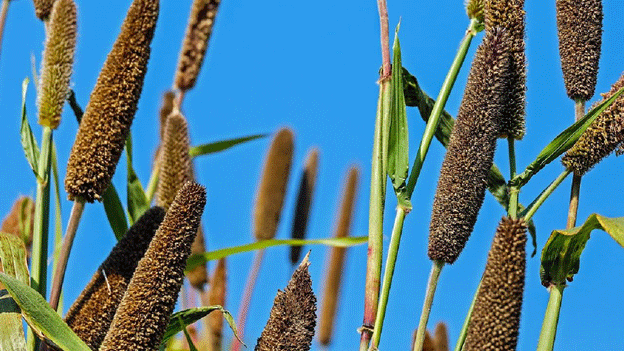Proso millet (Panicum miliaceum) has recently seen a resurgence in popularity due to its role in promoting sustainable agriculture, especially in regions with low rainfall and marginal soil conditions. One of the most promising varieties that is making waves in agricultural circles is CPRMV-1, developed and highlighted by the Indian Council of Agricultural Research (ICAR) under their #OneICAR initiative. Farmers in India, especially those cultivating in rainfed Kharif conditions, are increasingly adopting CPRMV-1 for its superior agronomic traits, including high yield potential, disease resistance, and early maturity.
Key Features of CPRMV-1:
1. Suitability for Rainfed Kharif Season:
CPRMV-1 has been tailored for rainfed agriculture, particularly during the Kharif season, when monsoon rains provide the primary source of water for crop growth. This variety is proving essential in regions like Karnataka and Tamil Nadu, where access to irrigation is limited. Farmers in these regions are benefiting from CPRMV-1’s ability to thrive in challenging, rainfed conditions, ensuring a stable harvest even when monsoon rainfall is unpredictable or insufficient.
2. High Yield Potential:
The yield of CPRMV-1 is notably high, with an average of 24-26 quintals per hectare. This is a significant improvement over traditional millet varieties, which often yield less in rainfed conditions. For farmers, especially smallholders, the potential to produce more from the same land area translates into higher income and increased economic stability. Moreover, the rising demand for millet in the health food market positions CPRMV-1 as a lucrative option for farmers looking to capitalize on millet’s growing popularity as a superfood.
3. Early Maturity for Crop Flexibility:
One of the most beneficial traits of CPRMV-1 is its short maturity period of 70-74 days. This quick turnaround allows farmers to harvest their crops sooner, making room for multiple cropping cycles within a single growing season. Such flexibility is invaluable for farmers who depend on fast crop rotations to maintain soil fertility and maximize land use, particularly in areas where the growing season may be shorter due to climatic factors.
4. Disease Resistance and Reduced Input Costs:
CPRMV-1 stands out for its resistance to several prevalent diseases, including Brown spot, Leaf blast, and Leaf blight, which are common in millet crops. It also shows moderate resistance to banded blight, reducing the overall risk of crop losses due to disease. With lower reliance on chemical pesticides, farmers cultivating CPRMV-1 can cut down on input costs, thus making their operations more economically and environmentally sustainable.
5. Pest Tolerance to Ensure Crop Health:
Apart from its disease resistance, CPRMV-1 is also tolerant to shootfly, a destructive pest that often infests millet crops. This pest tolerance is another layer of defense that helps farmers secure a higher percentage of their crop yield and reduces the need for frequent pest control interventions.
Proso Millet CPRMV-1 is proving to be an exceptional variety for farmers aiming to achieve high yields under rainfed conditions while minimizing the risks posed by diseases and pests. Its early maturity, high yield potential, and disease resistance make it a valuable crop for regions that depend on monsoons and lack reliable irrigation. Additionally, its role in sustainable agriculture aligns with broader efforts to reduce chemical inputs and promote environmentally friendly farming practices. Farmers cultivating CPRMV-1 stand to benefit from higher income, reduced costs, and the flexibility to grow multiple crops throughout the year. As the demand for millet as a health food continues to grow, CPRMV-1 is poised to become a staple for sustainable farming in India and beyond.
Error




